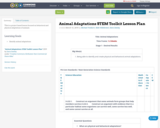
This is a project based lesson focused on behavioral and physical adaptations of animals.
- Subject:
- Applied Science
- Environmental Science
- Material Type:
- Activity/Lab
- Lesson Plan
- Simulation
- Date Added:
- 02/28/2019

This is a project based lesson focused on behavioral and physical adaptations of animals.
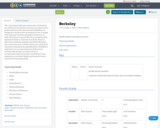
The curriculum builds upon many years of educating our students in the garden and scales up content across grades and lessons for instructional scaffolding. It is designed as an interactive teaching tool to be co-taught with classroom teachers and garden instructors as leads. Each lesson connects directly to standards: Next Generation Science, Common Core State, Physical Education, and Environmental and Health Education. Our concise and easy-to-follow lessons are a packed 45 minutes for preschool through fifth grade. Flexibility is important to us, so some lessons include several activities that teachers can choose from to accommodate their lesson plans. Consistency is also important, so we follow themes and lesson structure found in the Curriculum Map.
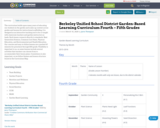
The curriculum builds upon many years of educating our students in the garden and scales up content across grades and lessons for instructional scaffolding. It is designed as an interactive teaching tool to be co-taught with classroom teachers and garden instructors as leads. Each lesson connects directly to standards: Next Generation Science, Common Core State, Physical Education, and Environmental and Health Education. Our concise and easy-to-follow lessons are a packed 45 minutes for preschool through fifth grade. Flexibility is important to us, so some lessons include several activities that teachers can choose from to accommodate their lesson plans. Consistency is also important, so we follow themes and lesson structure found in the Curriculum Map.
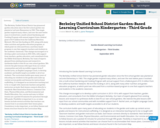
The Berkeley Unified School District has pioneered garden education since the first school garden was planted at LeConte Elementary in 1983. This single garden inspired many others, and over the next twelve years it evolved into a multi-school Gardening and Cooking Program with annual support from a federal grant of $1.9 million from the California Nutrition Network. We lost this funding in 2013, along with many other nutrition and garden education programs, at which point we refocused from a nutrition-based program to one that supports teachers and students in the academic classroom.
This change encouraged us to develop a pilot curriculum in 2013–1014, with support from teachers, garden educators, and consultants from the Edible Schoolyard, Berkeley. Our team of experts gleaned from existing lessons and research to synthesize drafts to best fit our own school gardens. We rewrote the pilot lessons with input from our school communities and with incredible support from P. Rachel Levin, an English Language Coach, to develop academic and health targets accessible to all of our students.
The curriculum builds upon many years of educating our students in the garden and scales up content across grades and lessons for instructional scaffolding. It is designed as an interactive teaching tool to be co-taught with classroom teachers and garden instructors as leads. Each lesson connects directly to standards: Next Generation Science, Common Core State, Physical Education, and Environmental and Health Education. Our concise and easy-to-follow lessons are a packed 45 minutes for preschool through fifth grade. Flexibility is important to us, so some lessons include several activities that teachers can choose from to accommodate their lesson plans. Consistency is also important, so we follow themes and lesson structure found in the Curriculum Map.
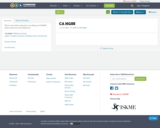
This is a site where educators can dialog on CA NGSS, share resources, and collaborate.
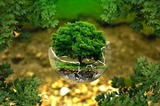
This learning resource will engage you and your colleagues in learning more about the importance of learning and teaching climate science as part of the Next Generation Science Standards (NGSS). You will hear from multiple stakeholders about the importance and impact of learning about climate science, as well as engage with learning tools and reflection questions to deepen your learning and position you to take action in your setting. We envision this professional learning taking place in an ongoing community of practice. We encourage you to determine and proceed at your own pace that reflects the needs of your team.
Image by ejaugsburg from Pixabay
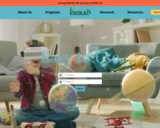
ESCOLAR aims to offer ALL elementary and middle-school students the opportunity to learn science within an engaging online environment.
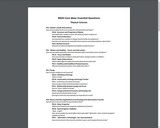
These are the Essential Questions pulled out of Appendix E of the Nextgenscience.org website.

Road to Doha explores critical environmental issues through addressing the driving question “How do we, as youth, impact climate change in our communities?”
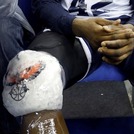
In this unit designed for an integrated middle school science classroom, students investigate why athletes ice injuries. This leads students to wonder why actual bags of ice are used instead of the instant ice packs found in first aid kits. Students then investigate the chemical reaction occurring within an instant ice pack and work to develop a better design.
Anchoring Phenomenon: First aid care for musculoskeletal injuries using bags of ice instead of instant ice packs containing an endothermic chemical reaction.
NGSS PEs Addressed: MS-PS1-1; MS-PS1-2; MS-PS1-5; MS-PS1-6; MS-PS3-3; MS-LS1-8; MS-ETS1-1
Cover Image Source: https://www.stack.com/a/cryotherapy

This is my tutorial and presentation on Scratch, a multidisciplinary tool through which students grades 3-11 can design interactive stories, games, and animations.
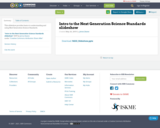
This slideshow provides basics to understanding and using Next Generation Science Standards.

This OSPI resource provides curated collections of free activities, lessons, units, and informational "texts" (articles, passages, e-books, videos, podcasts) to support every NGSS Performance Expectation (standard) in grades K-5. This resource is intended to support teachers with teaching science while also integrating science and ELA to grow student knowledge, thinking, application, and skills in both content areas. Materials are organized into units based on the topics and essential questions in each grade. Resources listed are all freely available online, with some requiring teachers to create free accounts to access. Some trade books are also listed that might be accessed through a library system. Gratitude is expressed to the Washington State Science Fellows, Science Fellows Emeriti, and ELA Fellows who contributed to curating the informational texts. For questions or comments contact OSPI Elementary Science at Kimberley.Astle@k12.wa.us.
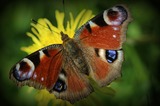
For those who have previously discovered this resource, we would like to direct you to a new and improved version that now adds curated and freely available informational "texts" (articles, passages, e-books, videos, podcasts) to support every NGSS Performance Expectation (standard) in grades K-5. This is to support elementary teachers with designing for learning that integrates science and literacy. Click "View Resource" above for the link.This adds an additional layer to the previous resource that listed freely available activities, lessons, units, and whole-year curricula for every K-5 NGSS Performance Expectation.Please email kimberley.astle@k12.wa.us at OSPI Elementary Science with feedback and questions.

The Educators Evaluating the Quality of Instructional Products (EQuIP) Rubric for science provides criteria by which to measure the alignment and overall quality of lessons and units with respect to the Next Generation Science Standards. The purpose of the rubric and review process is to: (1) provide constructive criterion-based feedback to developers; (2) review existing instructional materials to determine what revisions are needed; and (3) identify exemplars/models for teachers’ use within and across states.

This Wakelet is a collection of links to free online resources that address all areas of teaching the Next Generation Science Standards (NGSS). The resources are grouped together in smaller, topic-based collections. A range of resources are provided for K-12, and additional links will be continually added to the collection.

This learning resource will engage you and your colleagues in learning more about the importance of NGSS. You will build awareness and learn more about how to implement the Next Generation Science Standards in your own setting. We envision this professional learning taking place in an ongoing community of practice. We encourage you to determine and proceed at your own pace that reflects the needs of your team.
Image by Gorkhs from Pixabay

The Next Generation Science Standards (NGSS)* call for students to use the practices, concepts and content of science and engineering to understand phenomena and solve problems that are relevant to their lives. Starting from a student’s own experiences and community makes the science meaningful and increases engagement while helping students understand how global issues like climate change are present and addressable in their lives. In this series we examine how you can use the new science standards and your community to understand and address real world environmental problems and explore together how to integrate NGSS into your district’s classroom science units.Mapping neighborhood assets, opportunities, and problems can engage students more deeply in science and engineering. In this workshop you’ll learn how system models, looking for patterns, and observing change over time can help students investigate and map their community. Local ecosystems, water flow, and community assets are some of many possible areas for your mapping efforts. By the end of this workshop you’ll have strategies to use in mapping your community and ideas for how you can use the information gathered.

The Next Generation Science Standards (NGSS)* call for students to use the practices, concepts and content of science and engineering to understand phenomena and solve problems that are relevant to their lives. Starting from a student’s own experiences and community makes the science meaningful and increases engagement while helping students understand how global issues like climate change are present and addressable in their lives. In this series we examine how you can use the new science standards and your community to understand and address real world environmental problems and explore together how to integrate NGSS into your district’s classroom science units.How does engineering relate to solving problems in your community? Learn how IslandWood is using the engineering design process to help students investigate local stormwater problems, seek stakeholder input, and develop solutions. Explore what is involved in putting student ideas into action including possible real-world constraints, practical small-scale solutions potential partners, and mini-grant options. We’ll work together to figure out a plan for the topics and students you teach.

The Next Generation Science Standards (NGSS)* call for students to use the practices, concepts and content of science and engineering to understand phenomena and solve problems that are relevant to their lives. Starting from a student’s own experiences and community makes the science meaningful and increases engagement while helping students understand how global issues like climate change are present and addressable in their lives. In this series (NGSS in Action: Science and Engineering in your Schoolyard) we examine how you can use the new science standards and your community to understand and address real world environmental problems and explore together how to integrate NGSS into your district’s classroom science units.Workshop 1: Science in Action Description: "Venture outside the walls of the classroom to find local environmental phenomena that can anchor your classroom science unit. Explore with us the big picture of Next Generation Science Standards’ “three dimensional” science learning and then get hands on with the Science and Engineering Practices as you use them to build an understanding of an example phenomenon in our 'schoolyard.' You’ll leave this workshop with ideas and examples you can use in your own classroom science curriculum."